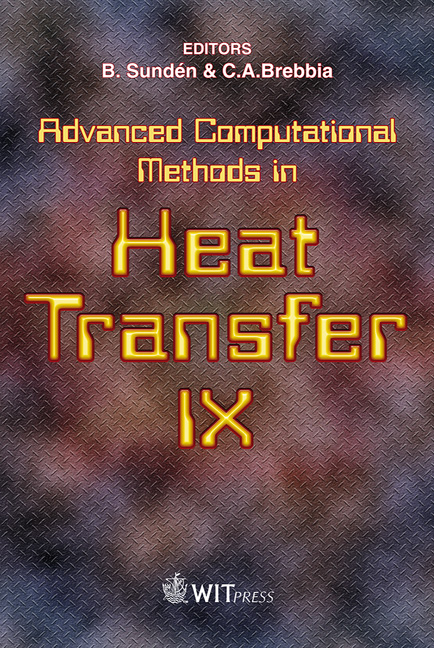Use Of Graphics Software In Radiative Heat Transfer Simulation
Price
Free (open access)
Transaction
Volume
53
Pages
10
Published
2006
Size
445 kb
Paper DOI
10.2495/HT060221
Copyright
WIT Press
Author(s)
K. Domke
Abstract
A base equation of radiative heat transfer, along with typical calculation methods, has been presented. Goals and base equation of computer graphics programs have been described. A quick analysis of graphics programs has been made, and their functions have been compared with the functions of other programs for radiative heat transfer modeling. Conditions that should be fulfilled by graphics programs in order to be used for modeling radiative transfer have been given. Formulas transforming heat quantities to radiant quantities, as used for Dirichlet’s and Neumann’s boundary conditions, have been presented. Keywords: modeling of radiative heat transfer, graphics software. 1 Introduction Radiative heat transfer is one of three basic ways of heat transfer. It is a common phenomenon, consisting in heat energy (power) transfer through electromagnetic (infrared) radiation, mainly with a wavelength of λ∈(0,78−1000)µm, between nontransparent (or translucent) surfaces of temperature above 0K. Even in temperature conditions of (0−50)oC range, for non-vacuum systems, the share of this method of heat transfer is ca (15−20)% of the total heat transfer, and increases significantly in higher temperatures. It is also the only method of heat transfer in vacuum systems. In many electrotechnical devices determining temperature fields related to normal work and operation of these devices is a basic condition for verifying the correctness of their construction and it determines their admissible loads. Hence the significance of methods allowing one to calculate temperature distributions and power fluxes related to heat transfer, including radiative heat transfer. Omitting radiative heat transfer in
Keywords
modeling of radiative heat transfer, graphics software.





